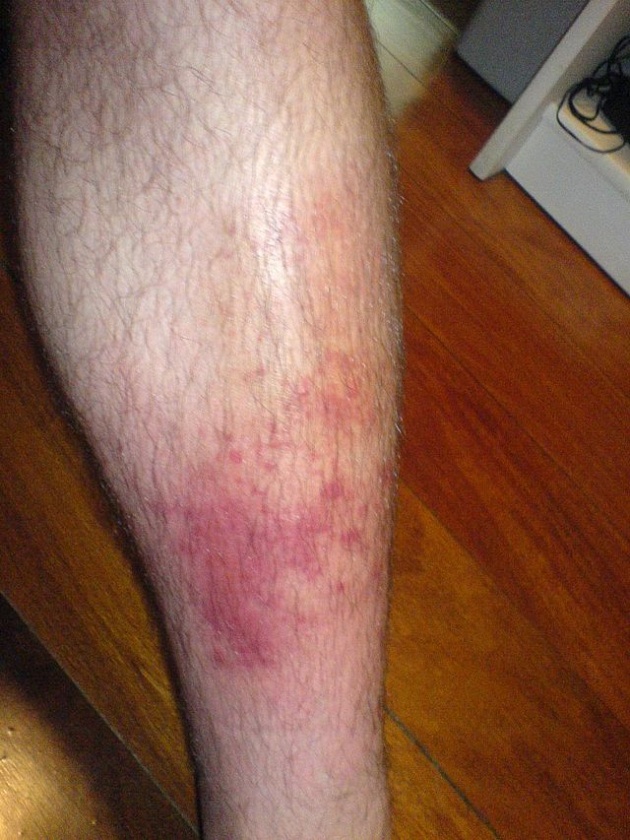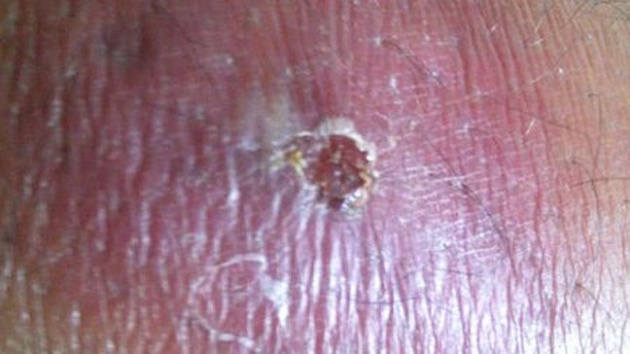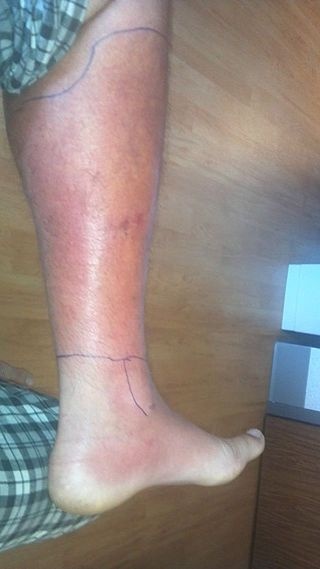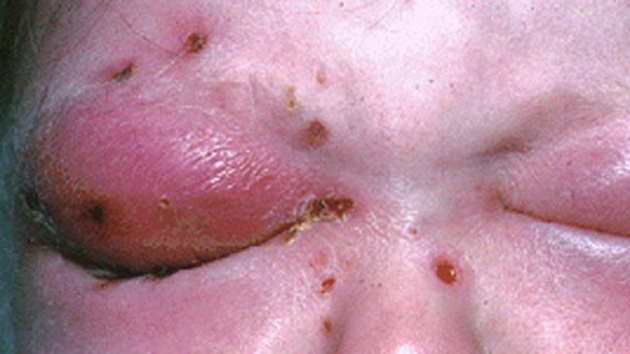

Definition
It is an acute spreading infection of deep subcutaneous tissue,commonly due to both group A streptococci and Staphyllococus aureus. Diabetic & Immuno Suppressed often have anaerobes or Gram-ve organism are present in their body. Lesion is not elevated & often develops following minor skin trauma.
Marked lymphodenopathy is present & systemic illness can also occure.Deep venous thrombosis & thromboembolism may be complicated by involvement of lower limb.Cellulitis implies predisposition to future infection at same site.
The legs and face are the most common site involved, though cellulitis can occur on any part of the body. The leg is
typically affected following a break in the skin.


Types of Severe necrotizing soft tissue infection
Cellulitis may rapidly progress extensive necrosis of subcutaneous tissue & overlying skin.Several clinical presentation are recognized,depending upon causative organism.
1- Necrotising Fascities :
Type (I) Polymicrobial Infection : (Synergistic necrotizing cellulitis)Fournier’s Gangrene with enterobacteriaceae & anaerobic organism.It occurs after surgery or in diabetic or immunocompromised patient.
Type (II) Monomicrobial Infection : Also known as streptococcal Gangrene caused by growth of Group A streptococcal pyrogenes.
2- Clostridial anaerobic cellulitis : Confined to skin and subcutaneous tissue.
3- Non-Clostridial anaerobic cellulitis :
4- Progressive bacterial synergistic gangrene : Staphyllococus aureus+microaerophilic streptococcus are the causative agents.
5- Pyomyositis : Discrete abcess with in individual muscle group.
6- Clostridial myonecrosis : Gas Gangrene
7- Anaerobic streptococcal myonecrosis :
8- Group A Streptococcal necrotising myositis : (Streptococcal myositis with out abcess formation).
Causes
Cellulitis is caused by a type of [[bacterium|bacteria]] entering the skin, usually by way of a cut, abrasion, or break in the skin. This break does not need to be visible. [[Group A streptococcal infection|Group A]] ''[[Streptococcus]]'' and ''[[Staphylococcus]]'' are the most common of these bacteria, which are part of the normal flora of the skin, but normally cause no actual infection while on the skin's outer surface.
Risk factors
- The elderly and those with immunodeficiency (a weakened immune system) are especially vulnerable to contracting cellulitis. Diabetics are more susceptible to cellulitis than the general population because of impairment of the immune system; they are especially prone to cellulitis in the feet, because the disease causes impairment of blood circulation in the legs, leading to diabetic foot/foot ulcers. Poor control of blood glucose levels allows bacteria to grow more rapidly in the affected tissue, and facilitates rapid progression if the infection enters the bloodstream. Neural degeneration in diabetes means these ulcers may not be painful and thus often become infected. Those who have suffered poliomyelitis are also prone because of circulatory problems, especially in the legs.
- Other risk factors include Obesity and leg swelling, and old age.
The elderly and those with immunodeficiency (a weakened immune system) are especially vulnerable to contracting cellulitis. Diabetics are more susceptible to cellulitis than the general population because of impairment of the immune system; they are especially prone to cellulitis in the feet, because the disease causes impairment of blood circulation in the legs, leading to diabetic foot/foot ulcers. Poor control of blood glucose levels allows bacteria to grow more rapidly in the affected tissue, and facilitates rapid progression if the infection enters the bloodstream. Neural degeneration in diabetes means these ulcers may not be painful and thus often become infected. Those who have suffered poliomyelitis are also prone because of circulatory problems, especially in the legs.
- Immunosuppressive drugs, and other illnesses or infections that weaken the immune system, are also factors that make infection more likely. Chickenpox and shingles often result in blisters that break open, providing a gap in the skin through which bacteria can enter. Lymphedema, which causes swelling on the arms and/or legs, can also put an individual at risk.
Diseases that affect blood circulation in the legs and feet, such as chronic venous insufficiency and varicose veins, are also risk factors for cellulitis.
Cellulitis is also common among dense populations sharing hygiene facilities and common living quarters, such as military installations, college dormitories, nursing homes, oil platforms and homeless shelters.
More serious infections such as an underlying bone infection ornecrotizing fasciitis should be ruled out.
Treatment
Treatment consists of resting the affected area, in some cases cutting away dead tissue, and antibiotics (either oral orintravenous). Flucloxacillin or dicloxacillin monotherapy (to cover staphylococcal infection) is often sufficient in mild cellulitis, but in more moderate cases, or where streptococcal infection is suspected, then this course is usually combined with oral phenoxymethylpenicillin or intravenous benzylpenicillin, or ampicillin/amoxicillin. Pain relief is also often prescribed, but excessive pain should always be investigated as it is a symptom of necrotizing fasciitis. Elevation of the affected area is also important.



